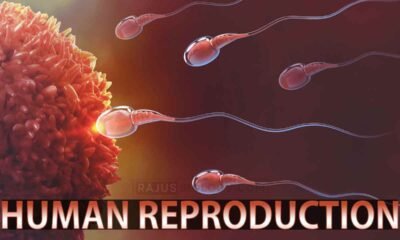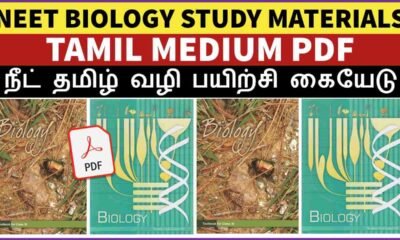Blog
Permanent Tissues in Plants & Their Types | Free Biology Notes

This article we will discuss about Permanent Tissues in Plants
- These cells are derived from meristematic tissues
- They lost the power of cell division
- Cells of permanent tissue are matured, definite shape, size and function
- The permanent tissues are broadly classified as 2 types:- simple permanent tissue and
- complex permanent tissue
Simple permanent tissue
- Simple permanent tissue consists of group of uniform cells which are similar in structure and carry out same function
- Simple permanent tissues are three types: parenchyma, collenchyma and sclerenchyma
Parenchyma
- Parenchyma is the commonest simple tissue
- First differentiated tissue & precursor of other tissue
- It is very primitive type of tissue and also called fundamental tissue
- Parenchyma are living and arranged loosely with intercellular spaces
- Cells are compactly packed or they have intercellular spaces between them
- Parenchyma consist of oval, round, polygonal, elongated or irregular cells
- Parenchyma cells are thin walled. Cell wall is made up of pectocellulose
- It is most abundant tissue, found in:- cortex, pith and leaf mesophyll
Collenchyma
- Collenchyma are living mechanical tissue
- The shape of collenchyma cell can be variable. It may be oval, spherical, round or polygonal
- Cell wall contains cellulose, hemicelluloses and pectic materials
- Cellulose, hemicellulose and pectin are deposited at the corners of cell
- Found in under the epidermis of young stems, leaf veins, leaf margins and petiole
- Collenchyma is absent in mature plant parts, roots and monocots
- Intercellular spaces are absent and cells are compactly arranged
Sclerenchyma
- Sclerenchyma are dead mechanical tissues occurring in mature organs of plant body
- Cells of sclerenchyma are long, narrow, thick walled, lignified without protoplasts
- Pits are also found. It may be simple pits or bordered pits
- Found in cortex, pericycle, xylem and phloem region
- Main function is provides mechanical support to plant organs
- Based on size and shape sclerenchyma cells are of two types:- Sclerenchyma fibres and Sclereids
Complex permanent tissue
- Complex tissues are made of more than one type of cells and they are heterogenous
- They are also known as vascular tissue or conducting tissue
- Complex tissues are absent in gametophytes
- Complex tissues are of two types:- Xylem and Phloem
Xylem
The term xylem was introduced by nageli (1858)
Xylem is conducting tissue which conducts water and mineral nutrients upwards from the root to the leaves
Xylem besides conduction also provide mechanical strength
They are composed of four different types of cells
The elements of xylem are xylem tracheids, xylem vessels, xylem fibres and xylem parenchyma
Phloem
The term phloem was introduced by nageli
Phloem is conducting tissue which conducts food materials from the leaves to other parts of the plants
First formed phloem is protophloem and later formed phloem is called metaphloem
They are composed of four different types elements
The elements of Phloem are sieve elements, companion cells, phloem fibres and phloem parenchyma

 Entertainment1 month ago
Entertainment1 month agoIbomma Bappam: Redefines Telugu Streaming Trend

 Blog2 months ago
Blog2 months ago[PPT] The living world Class 11 Notes
- Blog2 months ago
PG TRB Botany Study Material PDF Free Download

 Blog2 months ago
Blog2 months ago[PPT] Human Reproduction Class 12 Notes
- Blog2 months ago
Class 12 Biology Notes Chapter wise PPT

 Blog1 month ago
Blog1 month agoIosmirror.cc Apk: Enables Smart Screen Sharing
- Blog2 months ago
Class 11 Biology Notes Chapter wise PPT

 Blog2 months ago
Blog2 months agoDownload NEET Biology Study Materials in Tamil












